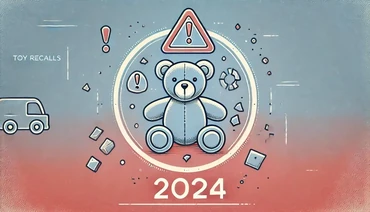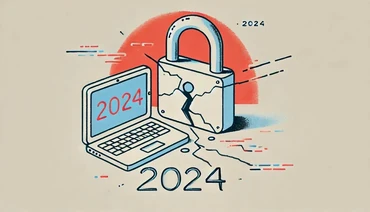What were the top safety recalls in 2024, most common scam phone numbers and privacy violations?
Does it seem like there are more safety recalls than ever? Well, there might be but it's a little hard to tell since the government organizations responsible for recalls don't really provide a lot of easy-to-read statistical information.
That's why there are people called data journalists. Ours is Dieter Holger, a math whiz and all-around master of extracting information from huge databases and turning it into plain English and informative graphs.
We turned Dieter loose on the recalls conducted in 2024, looking for patterns and useful statistics on the products that caused the most headaches for consumers and regulators.
Here's what he found:
The biggest appliance recalls

Appliances are expensive devices that can cook your dinner or burn your house down, or both. Nearly everyone seems to think they used to last just about forever whereas today you're lucky if they last a few years.
It's no surprise that oven fires are the most treacherous. Each year, they start fires that damage homes and sometimes kill consumers and their pets. And 2024 was no exception. Read more.
The biggest food recalls

This one is bad news for anyone who eats. Food recalls because of bacterial contamination reached their highest levels within five years in 2024.There were 154recalls filed with federalfood regulators due to contamination from the "big three" pathogensE. coli, Listeria and Salmonella.
The family-sized recalls are due to a variety of causes, including better detection. It's a little difficult to be too precise since several agencies are involved in food safety (USDA, FDA, CDC, etc.) and there's the little matter of how food is measured. Sometimes it's by units, sometimes by pounds, sometimes by gallons and on and on.
But anyway you look at it, our food supply could be a lot safer.Read more.
The biggest toy recalls

There were more than 22 million toy recalls in 2024 involving dangerous chemicals, choking, lead and other toxins and hazards.
There should be a law, you say? There is. In fact, there are plenty of laws but most toys are manufactured overseas, often in China, and are beyond the reach of American justice. You would think that Amazon, Walmart and so forth would be careful to stock only toys that meet federal standards. Unfortunately, you'd be wrong to think that. Read more.
The biggest car recalls

Cars get recalled for all kinds of reasons -- some major, many minor. The 2.2 million recalled in 2024 had everything from defects that could start a fire to a type font that was too small to read easily.
Most concerning were the park-outside warnings for fire-prone cars and do-not-drive for cars that were truly unsafe at any speed. Read more.
The biggest data breaches

Back in the day, "data" was kept in locked filing cabinets and information was transmitted via the telephone through reliable, secure networks like AT&T. You could "wiretrap" a phone but it wasn't easy and you couldn't really do more than a few at a time.
Today, everything's digital and it's a lot easier to steal private data even though it's stored and transmitted by reliable, secure networks like, oh, AT&T, which had no fewer than 51 million data breaches in 2024. Read more.
Privacy violations

Data breaches are bad enough but they at least involve bad guys breaking into legitimate companies' systems. Most privacy violations are carried out by some of the biggest names in corporate America, the ones who provide apps that make it easier for their customers to do business and, unwittingly, give up a lot of private information.
Shopping apps are the biggest offenders, especially those that work on Android phones. Apple's iPhones are more secure. One study found that about 60% of Android apps violate privacy policy standards.Read more.
Scammers' favorite phone numbers

This one isn't really about recalls or data breaches but is an interesting little sidelight. It turns out that there are certain phone numbers and area codes that appeal to scammers. Apparently, they somehow look more trustworthy than others.
It perhaps says something about the political atmosphere today that only one of the top numbers is in the D.C. 202 area code. Distrust of government apparently carries over to distrust of D.C. phone numbers, which maybe isn't a bad thing.Read more.
The count starts over
That's itfor 2024 as far as safety recalls go. Although it was a tumultuous year, at least there weren't any political recalls, technically speaking anyway, and most systems continued to work fairly well most of the time, which is about all you can ask for, apparently.
Staying safe isn't easy but if you drive carefully, wash your hands often and keep up with the recall notices and safety news, you should have a good chance of making it to 2026.
Stay tuned. Dieter remains on the case and will be decoding data for 2025 and beyond.
Photo Credit: Consumer Affairs News Department Images
Posted: 2025-01-01 00:51:14















